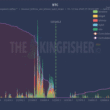Crypto markets remain highly volatile amidst escalating Middle Eastern tensions, but major developments in U.S. policy and a remarkable surge in Circle stock have grabbed investor attention. As the GENIUS Act clears new legislative hurdles and former President Trump doubles down on his crypto optimism, both the markets and regulators appear to be in wait-and-see mode.
Regulatory Shifts: GENIUS Act Drives Market Sentiment
In a decisive move, the passing of the GENIUS Act has been a major catalyst for U.S.-based crypto firms, most notably Circle, whose stock soared in response to the news. Former President Donald Trump added fuel to the fire by urging the House of Representatives to approve the GENIUS Act, while boldly declaring that “crypto is the future, and we’ll own it.” Meanwhile, Ohio has made waves by exempting Bitcoin payments under $200 from state taxes, hinting at a growing trend of regulatory adaptation and crypto-friendly policy.
Institutional and Corporate Moves: New Collateral and Payment Options Emerge
Institutions are embracing digital assets with new vigor. CryptoCom and Deribit both announced they will accept BUIDL token as collateral, expanding trading flexibility for their users. Coinbase continued its expansion, launching ‘Coinbase Payments’ and allowing USDC to be used as collateral for trading—moves that pushed its stock higher. On the IPO front, SOL Strategies announced plans for a U.S. public listing, and brokerage giant FalconX is reportedly in talks about going public, reflecting sustained interest in crypto equities despite market turbulence.
Key Stats & Figures
- Stablecoin Market Cap: Exceeds $250 billion, underlining aggressive growth in digital dollar markets.
- Crypto Lender Holdings: $60 billion in assets now controlled by major crypto lending firms.
- Lion Group Funding: $600 million raised for the HYPE treasury, one of the year’s largest crypto capitalizations.
- Spot XRP ETF: First spot ETF for XRP launched in Canada, marking a milestone for crypto investment products.
Geopolitics and Market Uncertainty Shape Industry Outlook
Ongoing conflict between Israel and Iran continues to inject volatility into crypto trading, while Federal Reserve officials hold a “wait-and-see” stance on monetary policy. These macro pressures have kept market participants cautious. At the same time, platforms such as Degenz Live are becoming go-to sources for analysis at the intersection of crypto, macroeconomics, and high-stakes speculation.
Conclusion: What This Means for the Market
Rapid shifts in regulation, growing institutional participation, and macro uncertainty are converging to reshape the crypto investing landscape. As firms race to offer new products and investors watch policy developments closely, the path forward will be defined by adaptability and bold market moves. Near-term volatility looks set to persist—but so too does long-term confidence in the sector’s potential.
